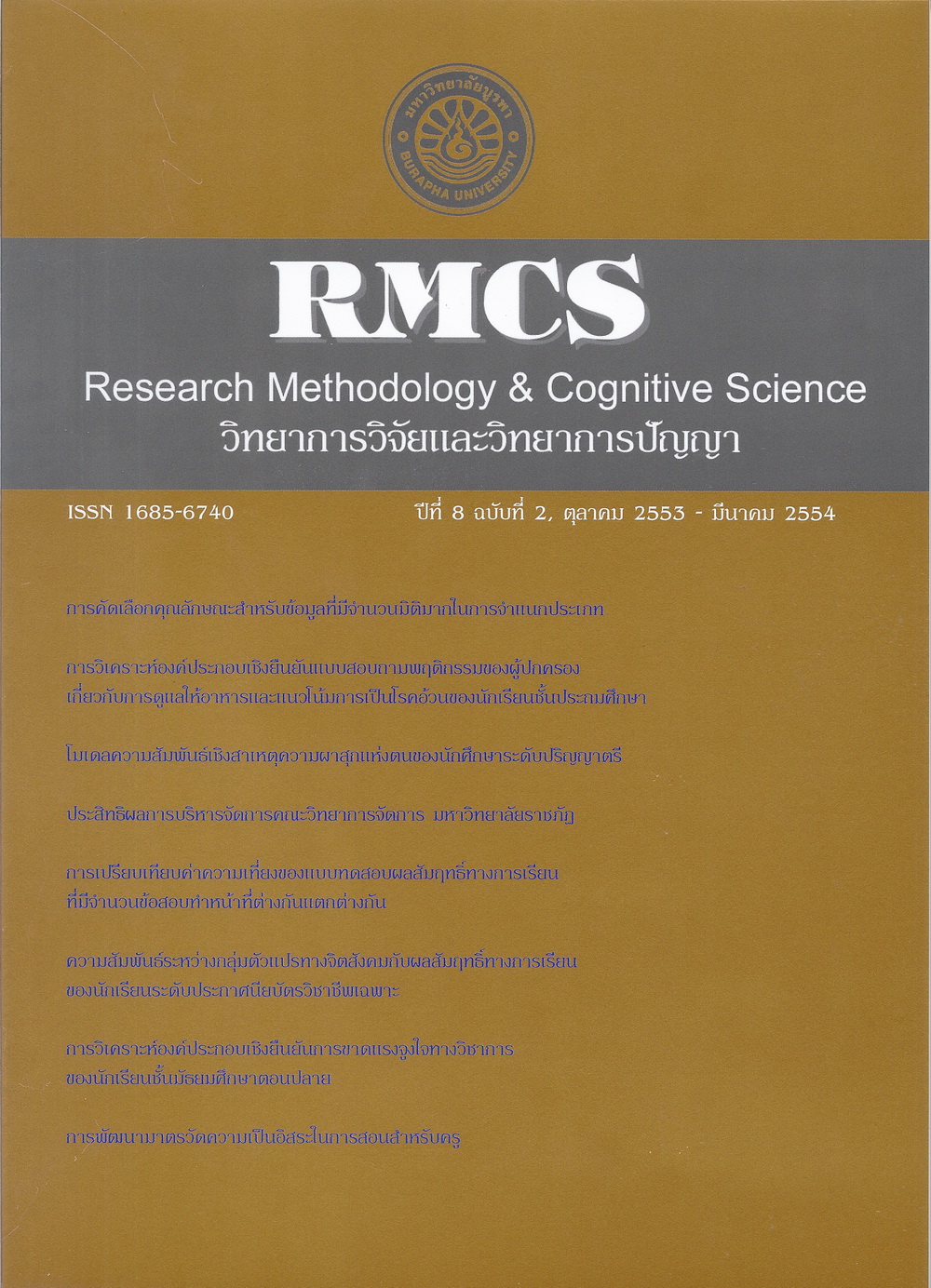การพัฒนามาตรวัดความเป็นอิสระในการสอนสำหรับครู
Main Article Content
Abstract
Development of the Teaching Autonomy Scale for Teachers
The objectives of this study were 1) to construct the Teaching Autonomy Scale for teachers; 2) to verify the construct validity of the scale; and 3) to derive norms for the scale. The teaching autonomy scale was based on concept of Deci, and Ryan’s self-determination theory (1991): general teaching autonomy and curriculum autonomy. The sample consisted of 1,200 secondary school teachers under the jurisdiction of the Commission for Basic Education in the Chon Buri Province, in the academic year 2008. Descriptive statistics were obtained by means of SPSS; Scale quality was determined by Lertap 5; and LISREL 8.50 was used for second order conų rmatory factor analysis. The major ų ndings were: 1. The items of the teaching autonomy scale were found to have content validity. The teaching autonomy scale was composed 2-Factors: general teaching autonomy 16-items and curriculum autonomy 24-items. Item – to – scale correlations ranged from .37 to .65; scale reliability was .94 for the 40-item. 2. The construct validity of the teaching autonomy scale was confirmed by alignment with the criterion; the Chi – square goodness of fit test value 460.26; p = .15, df = 430, GFI = 0.97, AGFI = 0.95, and CFI = 1.00. 3. The norms of the teaching autonomy scale for teacher were divided into three levels; percentile rank higher than 72.00 indicating high level of teaching autonomy; percentile rank from 26.25 to 72.00 indicating normal teaching autonomy; and percentile rank lower than 26.25 indicating low teaching autonomy.
